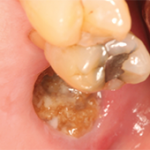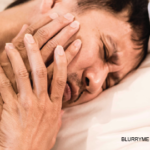Osteonecrosis, also called avascular necrosis or aseptic necrosis, is a condition in which the death of bone cells (due to decreased blood flow) can lead to pain and collapse of areas of bone. This collapse of bone, in turn, can lead to degenerative arthritis of nearby joints, most commonly the hips and knees. Less frequently affected are the shoulders, hands, and feet. In rare instances, osteonecrosis can occur in the jaw— resulting in pain and mouth ulceration. Osteonecrosis is not fatal, but can lead to pain, arthritis, problems with physical activity, and even the need for joint replacement. Most of the 10,000 to 20,000 Americans developing osteonecrosis annually are between age 20 and 50. These individuals usually have a history of serious trauma, corticosteroid use, excess alcohol intake, or other conditions including systemic lupus erythematosus, dysbarism (“the bends” that occur with scuba diving), blood disorders, HIV infection, and radiation therapy.
Physicians suspect osteonecrosis when a person with risk factors for the condition experiences localized bone-type pain. A diagnostic X-ray of the area in question is done and, because these X-rays may appear normal in the early stages of disease, other imaging studies—such as bone scans or MRIs—may be scheduled.
Unfortunately, there is no clear evidence indicating the best way to treat osteonecrosis. Treatment often starts with pain medications and limiting weight bearing on affected areas. This type of conservative therapy may work well for patients with early osteonecrosis in small areas of bone. However, it does not work for those with hip or knee osteonecrosis who are facing progressive bone collapse. Instead, surgical procedures may be recommended to relieve pain and, hopefully, prevent bone collapse.
According to patient fact-sheet writer Kevin McKown, MD, “The most important ways to prevent osteonecrosis are to avoid excessive alcohol intake and work with your physician to limit corticosteroid use.” Tobacco use also should be avoided, as it has been implicated as a possible risk factor for osteonecrosis.
Download the complete osteonecrosis fact sheet and other patient-education materials at www.rheumatology.org by following the links to patient education from the Practice Support menu.


